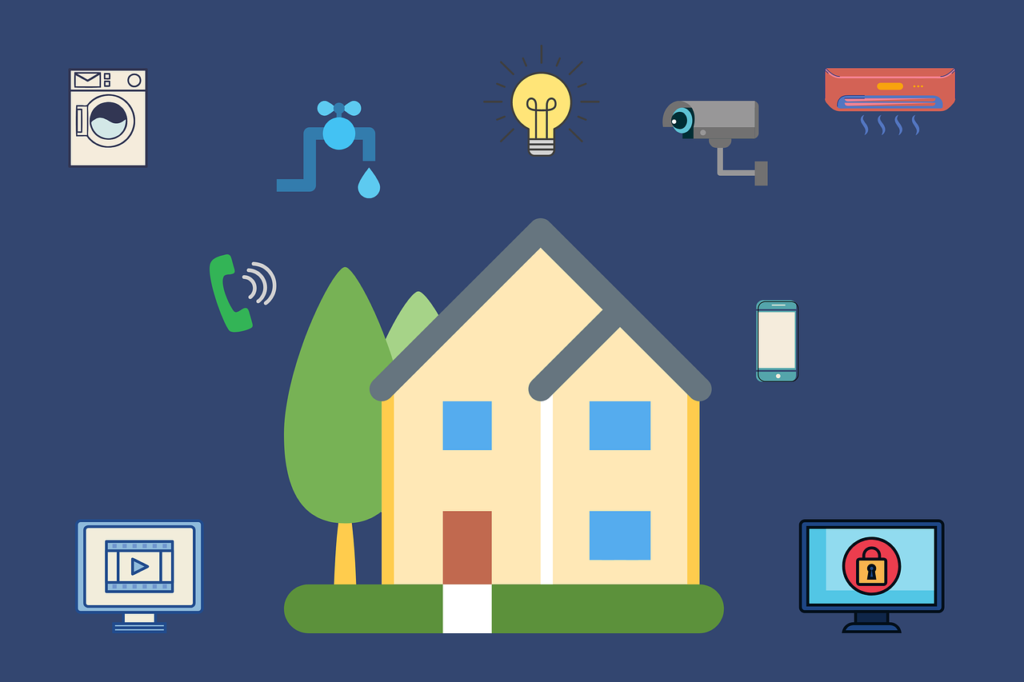
Our homes have grown beyond simple brick-and-mortar structures in the digital age. They now effortlessly integrate technology, transforming our living spaces into integrated, efficient ecosystems. One of the most revolutionary tools in this transformation is the Aqara Smart Home Camera. But the journey to a fully-optimized smart home involves more than just cameras. Here’s your blueprint for unlocking the fullest potential of your home through a smart setup.
The emergence of the Internet of Things (IoT) has been a game-changer for home automation. Devices once considered separate entities now communicate, collaborate, and make decisions based on our preferences and needs. With the right gadgets, your home can learn your habits, optimize energy usage, and offer unmatched security.
Why Choose a Smart Home Setup?
Before diving into the specifics, it’s essential to understand why you should consider a smart home in the first place.
Energy Efficiency:
Smart thermostats and energy-efficient lighting solutions can adapt to your patterns, preventing energy waste. Smart home solutions, according to the US Department of Energy, can reduce energy use by up to 10%.Security:
Aside from the smart home camera, smart locks, motion sensors, and window/door sensors give an extra layer of security. Because they are linked to your smartphone, they transmit real-time notifications for any questionable activity. Check out these smart home cameras from TP Link: https://www.tp-link.com/ph/home-networking/cloud-camera/Convenience:
As you step in the door, imagine your house playing your favorite playlist or pouring coffee for you. Such is the power of intelligent integration.
Essential Components of a Smart Home
Centralized Hub:
These devices, often known as smart home hubs or controllers, serve as the brain of your system. They incorporate multiple technologies to provide easy communication. Amazon’s Echo (with Alexa) and Google Nest Hub are two popular choices.Security Systems:
This includes the smart home camera, smart locks, and other sensors. Cameras have experienced significant technical advancements, with features such as facial recognition and night vision.Smart Lighting:
Users can manage the ambiance and lighting with systems like Philips Hue based on time, mood, or occasion. These systems can also coordinate with your favorite music, creating a dynamic entertainment experience.Heating and Cooling:
Nest and Ecobee smart thermostats learn from your behavior and change the temperature accordingly, saving energy and assuring comfort.Smart Appliances:
Refrigerators that notify you when you run out of milk, washing machines that order detergent when it runs short, and ovens that ensure your meal is cooked properly every time.
Setting Up Your Smart Home: Best Practices
Plan: Before purchasing any device, have a clear idea of what you need. While it’s tempting to buy the latest gadgets, they should align with your requirements and lifestyle.
Prioritize Security: Secure your network. Ensure all devices, especially those related to security like the smart home camera, are updated regularly. Using strong, unique passwords and enabling two-factor authentication can be helpful.
Integration is Key: Devices should be compatible with each other for a seamless experience. Check if the new gadget you’re eyeing works well with your existing ones.
Educate Yourself: Stay updated about the latest in smart home technology. Attend webinars, join forums, and read articles to make informed decisions.
Understanding the Cost Implications
From a budgetary standpoint, venturing into the smart home realm may be overwhelming. However, the reality is that the cost of many smart devices has fallen over time. Starting modestly, possibly with smart lamps or plugs, you can progressively build your environment. A long-term viewpoint is equally important to consider. While the initial cost may appear to be large, many of these devices can result in significant savings over time. A smart thermostat, for example, can save heating and cooling expenditures, and smart plugs can switch off gadgets that consume power even when they are turned off.
Embracing Voice Control and Artificial Intelligence
With the introduction of voice-controlled assistants such as Amazon’s Alexa, Google Assistant, and Apple’s Siri, the user experience in smart homes has dramatically improved. Without lifting a finger, you can adjust lighting, play music, and set reminders with simple voice commands. Furthermore, because these systems use Artificial Intelligence (AI), they are continually learning and adjusting to your preferences. Over time, they will be able to forecast your needs and adjust for you, whether it’s adjusting the lighting for your evening read or preheating the oven for dinner.
We’ve seen a world where convenience, security, and efficiency are all flawlessly intertwined when exploring the world of smart homes. As technology advances, the barrier between our digital and physical places blurs, resulting in houses that are truly sensitive and flexible to our needs. What is the ultimate takeaway? Accept the change, because the smart home revolution isn’t just the future; it’s here now.